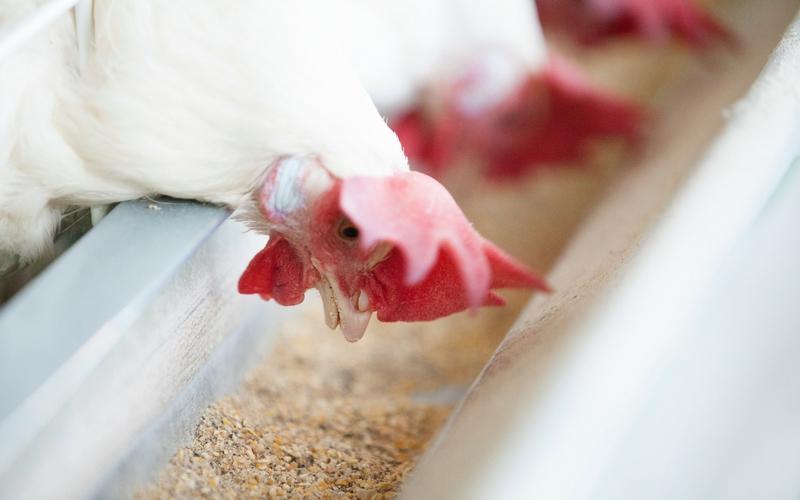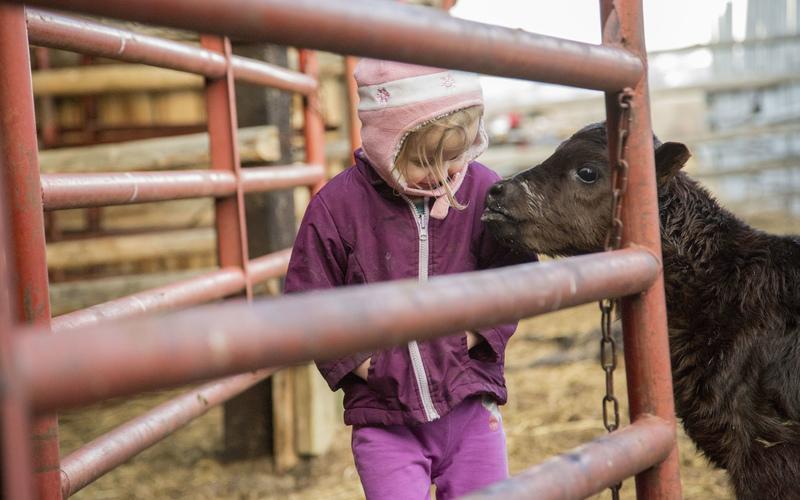Fumonisin is commonly found in corn at levels of 2 parts per million (ppm) or less, but in recent years, testing has confirmed levels well above 30 ppm, and some even above 100 ppm. Livestock producers should be aware of the fumonisin contamination when purchasing grain because, when consumed by animals, fumonisin toxicity affects several of their biological systems, leading to reduced feed intake and efficiency and liver damage. Understanding the effects of these mycotoxins in cattle feed is key to maintaining animal health and productivity.
Mycotoxins in contaminated feeds have differing effects on animals.
Mycotoxins are secondary metabolites of molds and fungi that infect plants. More than 500 mycotoxins have been identified, and most animal feedstuffs are likely to be contaminated with multiple mycotoxins. The effects of mycotoxins vary, as each mycotoxin has its own specific impact on the animals consuming the contaminated feeds.
The Fusarium species are the predominant types of mold that contaminate crops and, eventually, animal feed. Ranging from white to pink or red in color, these molds are associated with wet conditions and moderate temperatures, especially following insect or hail damage. They are found worldwide, largely in corn. Fusarium molds produce several mycotoxins, including fumonisin, deoxynivalenol (vomitoxin) and zearalenone, with higher concentrations in the stalks and cobs than in the grain.



Signs of fumonisin in cattle
While cattle are generally resistant to many of the negative effects of mycotoxins, thanks to the degradation of the compounds by rumen microbes, high levels of mycotoxins in feeds can significantly impact animals. Fumonisin, in addition to not being significantly degraded in the rumen, is also not well-absorbed. The majority of fumonisins consumed by cattle are passed out in the feces. However, fumonisins can overwhelm the gut and cause significant issues in cattle.
The presence of fumonisin in the feed reduces palatability and, as a result, slows intake. Cattle may stand off a bunk contaminated with high levels of fumonisin. Calves without fully developed rumens and animals that are dealing with stressful situations, such as weaning or transportation, have an increased sensitivity to fumonisin due to reduced rumen fermentation and weakened immune functions.
Fumonisin can negatively impact animal health:
Even low levels of fumonisin affect gut health.
The gastrointestinal tract is impaired when cattle consume mycotoxins. Gut epithelial cells need protection from direct interaction with microbes and the gut environment. Specialized cells in the epithelium provide this protection. One example of these specialized cells is goblet cells, which produce mucus, coating the epithelial cells to lubricate and protect them from the contents of the gut. Intestinal cells also have specialized structures to form tight junctions, limiting the passage of molecules between cells. These mechanisms and others work in concert to prevent pathogen colonization and systemic access by toxins and pathogens.
Although fumonisin is poorly absorbed and metabolized by cattle, it induces disturbances in the gastrointestinal tract. Rumen motility can slow down, resulting in the increased exposure of the intestinal epithelium to the effects of fumonisin and other mycotoxins. Even low amounts of mycotoxins in cattle feed can impair intestinal health and immune function, resulting in altered host-pathogen interactions and an increased susceptibility to disease. The epithelial cells in the gastrointestinal tract are damaged by fumonisins, reducing the mucin layer thickness, tight junction strength and cell proliferation and, ultimately, increasing the opportunity for pathogen invasion.
Fumonisin has toxic effects on the liver and kidneys.
An analysis of tissues from cattle fed Fusarium in high doses indicated that the majority of fumonisin absorbed is retained in the liver, with lesser amounts retained in the muscles and kidneys. This accumulation is concerning, as fumonisin is toxic to the liver and kidneys and causes apoptosis, followed by the proliferation of regenerative cells in the affected tissues. Fumonisin also reduces the antioxidant levels in the liver, decreasing the animal’s defense mechanisms. This leads to liver lesions and elevated enzymes that are indicative of liver damage.
Fumonisins interrupt sphingolipid synthesis and metabolism.
The disruption of sphingolipid metabolism is the mechanism underlying much of fumonisin’s negative impact in the body. Sphingolipids are specific types of fats that protect cells from environmental damage by forming a stable, chemically resistant layer on the cell membrane. Fumonisins disrupt cell signaling by inhibiting ceramide synthase, interrupting sphingolipid synthesis and metabolism, and can alter the morphology of affected cells. This reduces cellular stability and protection, leading to cell death and significant alterations to cellular metabolism and cell-to-cell communication.
Mycotoxins can increase susceptibility to diseases.
Calves that consume fumonisin experience decreased immune function, due in part to the impairment of lymphocyte development. Sphingolipid metabolism in immune cells is involved in the signaling pathways that control lymphocyte development, differentiation, activation and proliferation. Lymphocytes are the white blood cells that are important for maintaining a strong antigen response. These lymphocyte-related problems mean that consuming Fusarium molds can increase an animal’s susceptibility to diseases and reduce vaccine efficacy.
Handling contaminated feed in your beef cattle operation
Unfortunately, once mycotoxins are formed in the plant, there is no commercial method of removing them from contaminated feeds. Harvesting and storing contaminated crops at low moisture levels (i.e., less than 15%), along with the separation of highly contaminated feeds, is important in order to reduce the risk of mold growth and mycotoxin production in uncontaminated grain.
While the European Commission recommends that adult cattle can tolerate fumonisin levels of up to 50 ppm in diets, the U.S. Food and Drug Administration’s guidance for fumonisins recommends a maximum concentration of 30 ppm in the diet of feedlot cattle, 15 ppm for breeding stock and 10 ppm for calves. Furthermore, contaminated corn or corn byproducts should contribute no more than 50% of the diet. It is crucial to check the level of fumonisin in the complete diet, as it can be three times more concentrated in corn byproducts, such as distillers grains and corn gluten feed, and 10 times more concentrated in corn screenings.
If contaminated feeds must be used to feed cattle, elevators may blend the corn to reduce the fumonisin concentration to acceptable levels, or producers can include feed additives to mitigate the risk of mycotoxins. As fumonisin is associated with reduced feed consumption, there is a concern that low levels of fumonisin can interact with other mycotoxins, reducing the growth of calves and slowing the weight gain of feedlot cattle. Fumonisin contamination can be especially detrimental to newly received cattle and calves, preventing them from getting off to a healthy start.
Testing services like Alltech® 37+ and Alltech® RAPIREAD® can help producers and feed mills assess their mycotoxin risk so that the appropriate management and nutritional measures can be put in place.
I want to learn more about nutrition for my beef cattle.
























